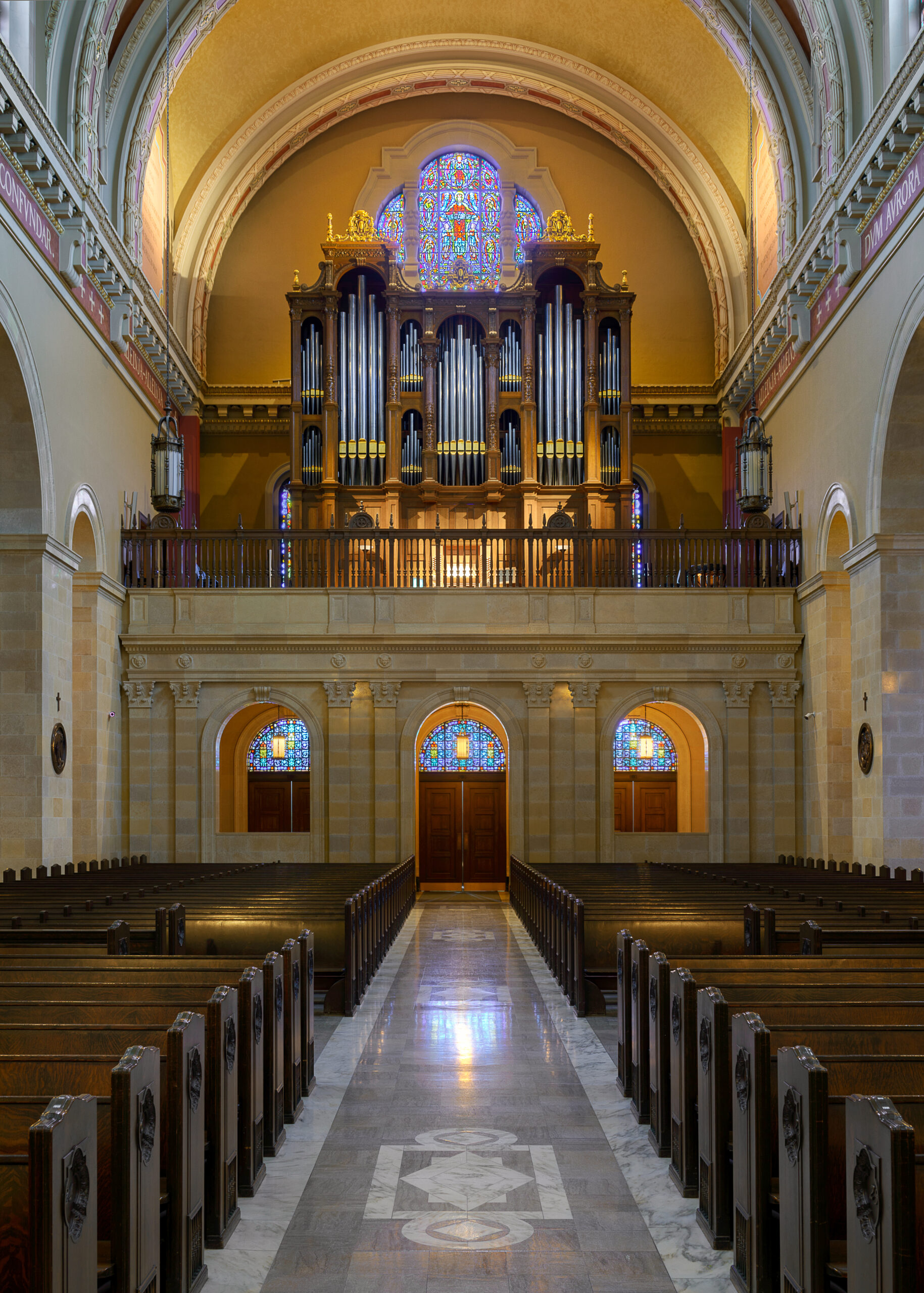
News
For 20 years, organ at St. Cecilia has been an instrument of divine intervention
April 18, 2024
A free organ lesson at St. Cecilia Cathedral when she was 10 years old shaped the entire course of Ariana Hawkin’s life. She believes the opportunity to play one of the most storied organs in the world right in Omaha was nothing short of divine intervention.
“I remember being dazzled by the huge range of sounds and wondering if I would ever play like Dr. (Marie) Rubis Bauer, the organist who I heard playing every Sunday at Mass,” Hawkins said.

Ariana Hawkins playing a concert at St. Cecilia Cathedral following her graduation from Benedictine College.
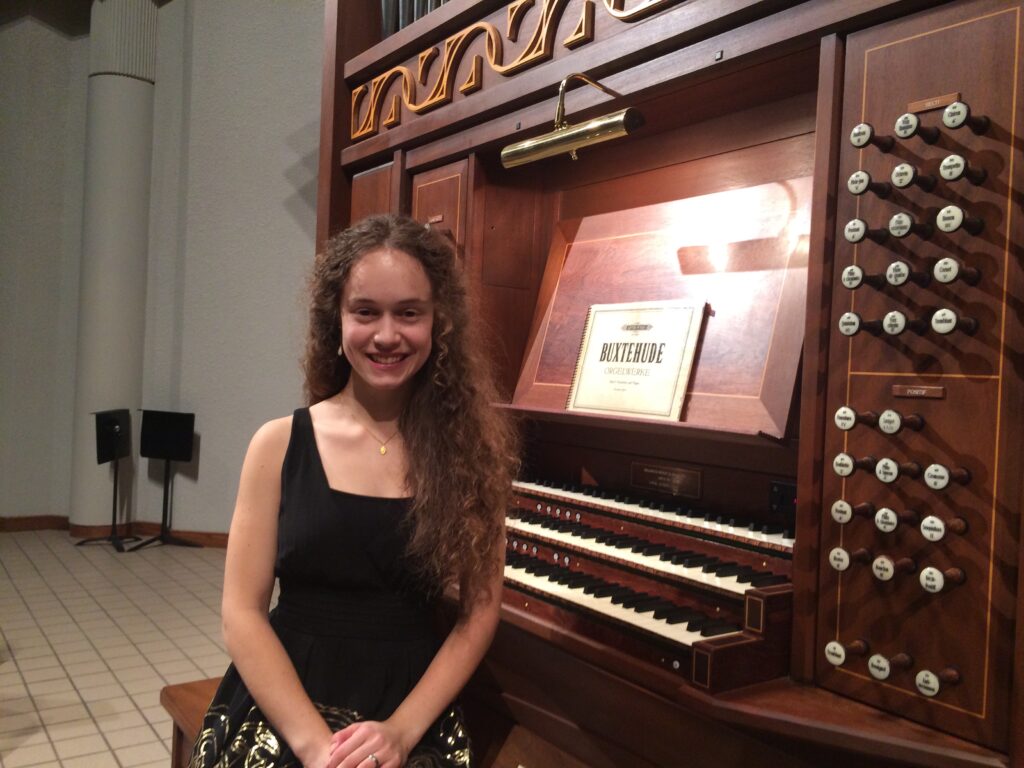
Ariana Hawkins is pictured at the University of Kansas. COURTESY PHOTO
St. Cecilia Cathedral held a summer program that offered children a free organ lesson. Hawkins was one of the first students to take lessons on the Martin Pasi Opus 14 organ, which is being celebrated this year for its 20th anniversary.
Hawkins continued those lessons through high school and went on to get a degree in music from Benedictine College in Atchison, Kansas, and a master’s degree in church music at the University of Kansas. She lives in Kansas City with her husband, where she plays the organ in several parishes, including the Cathedral of St. Peter.
Before taking lessons at the Omaha cathedral, Hawkins’ parents, Rose and Steve Carlson, were looking at a house for sale near St. Cecilia. As it happened, they heard the cathedral bells playing and decided to go inside to look around. They ended up getting a personal tour from Martin Pasi, a native of Austria who designed, built, and “voiced” the organ.
That chance encounter would make a significant impact on Hawkins.
“They did buy a house in the neighborhood specifically because of that experience,” she said. “This made it much easier for me to participate in the cathedral music program and shaped the whole course of my life, for which I’m very grateful. It was certainly an experience sent by God.”
Pasi and his crew of builders from Pasi Organ Builders of Roy, Washington, spent two years and 35,000 hours building the organ. At the time of its installation, it was one of only four “dual-temperament” organs in the world. The concept for the organ developed out of conversations between organ builder Martin Pasi and the cathedral music director at the time, Kevin Vogt.
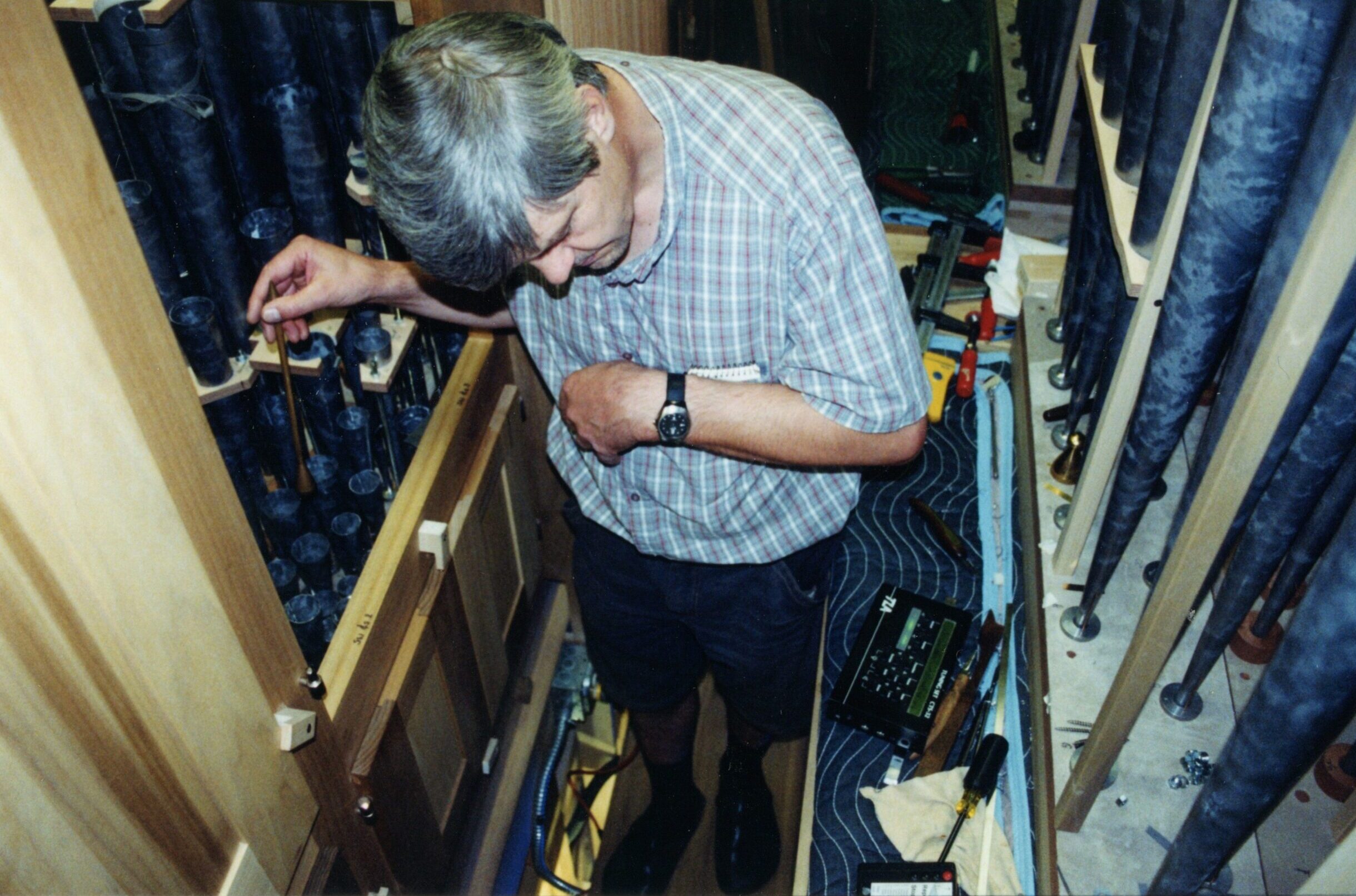
Martin Pasi “voicing” the organ during construction.
The organ is 34 feet tall, weighs 25 tons and has 6,000 pipes. It is unique in that it is essentially two organs sharing one-third of their pipes.
The cathedral’s acoustics help bring the organ into its full glory. When the cathedral is empty, the organ continues to “sing” for seven seconds after the organist stops playing. When it is full, it reverberates for four.
Hawkins believes it is fitting that the cathedral is home to such an extraordinary instrument. A cathedral, especially one dedicated to St. Cecilia, the patron saint of musicians, composers and instrument makers, has a duty to uphold beautiful liturgical music.
“In the sacred liturgy, we should offer only the best. The excellent craftsmanship and unique nature of the Pasi place it among the best of organs,” she said. “The organ is the primary instrument of the liturgy, besides the voice, and the Pasi is a wonderful foundation for the cathedral’s musical charism. It’s so essential not only to execute great liturgical music but also to form people, especially kids.”
Dr. Marie Rubis Bauer, who began working at the cathedral while the Pasi organ was being built, continues to provide children the opportunity to play the organ. The cathedral music ministry is committed to making the organ accessible to those who want to learn to play the organ. Rubis Bauer compares playing the instrument to dancing because “your whole body has to play the organ.”

Dr. Marie Rubis Bauer prepares to play the Cathedral organ.
Another of her students, Gianna Manhart, was also 10 when she began playing. She is now a freshman at the University of Nebraska-Lincoln, where she plays the Opus 8 organ at the Newman Center – St. Thomas Aquinas Church on campus.
“I recall being a little intimidated to play it (the Pasi organ) because it was the biggest instrument I had ever seen,” she said. “It was very different from the piano, which I had been playing for a few years prior, and I don’t think my feet could even reach the pedal board at the time. Yet I fell in love with the instrument immediately.”
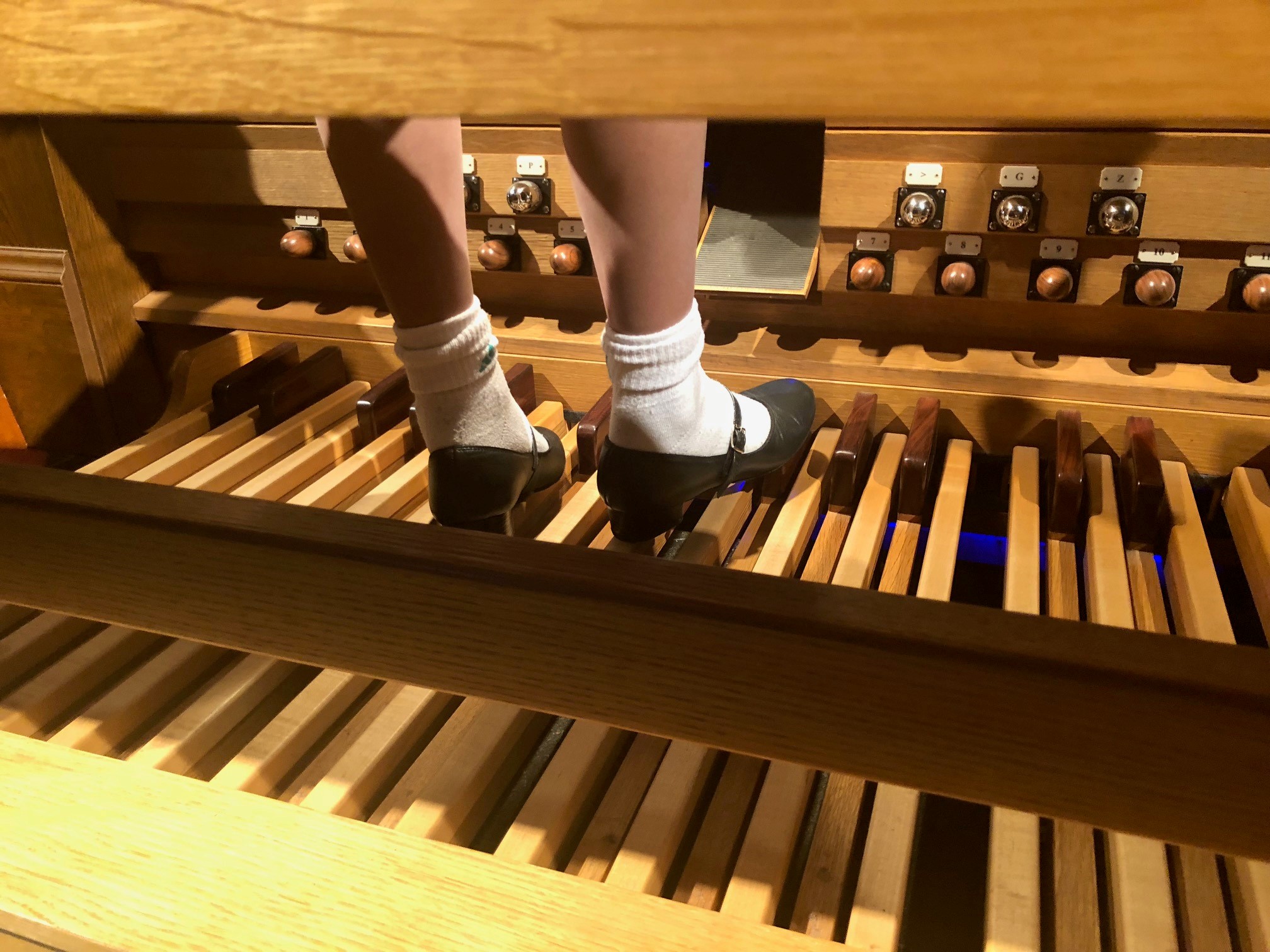
Gianna Manhart using the organ’s pedals while in grade school.
She calls the Pasi organ and the cathedral a blessing.
“I think that fact that the cathedral has such a unique and beautiful instrument exemplifies that the Archdiocese of Omaha is committed to emphasizing the significance of sacred music,” Manhart said. “The organ is the instrument of the Church, and I strongly believe that is why it is important to continue to encourage more individuals to learn to play the organ to ensure and maintain its relevance in the realm of sacred music within the Church.”
She credits her success on the organ to Rubis Bauer, whom she calls a mentor and friend.
“As my teacher, she would always push me out of my comfort zone and encourage me to aspire to be a better musician. She first encouraged me to play for the Stations of the Cross at the cathedral, then for recitals, the flower festival, and eventually to play Masses at Our Lady of Lourdes and Saint Margaret Mary. Now as a freshman in college, I’ve had the incredible opportunity to play at the Newman Center at UNL with their chamber choir led by Nik Barger.”

Gianna Manhart. COURTESY PHOTO
Bauer said 25 of her students are currently serving parishes. Some are teaching in Omaha and other cities. One of her former students is serving in a seminary and others are directing choirs. The success of her former students proves that “the world needs organists.”
She notes that the organ is the only instrument mentioned by name in official Church documents. “It’s had several hundred years of presence in the Church, both accompanying people in their quiet prayer or boisterous prayer and also inspiring people early on in its history.”
The Pasi organ replaced the cathedral’s original organ, built in 1918 and rebuilt in the 1950s and again in the 1970s. In the summer of 1998, a pledge from anonymous benefactors allowed work to begin on the Pasi organ, which was three times the size of the original organ. Its exterior casing is made of oak and incorporates some ornately carved wood from the original organ. It is expected to play for hundreds more years without any major renovation.
Rubis Bauer said the organ is known far beyond Omaha and “maybe even more known outside of Omaha than it is in Omaha. It is really special.”
Of course, the organ is special for many reasons, but Bauer said its most important function is that “it accompanies people in their worship and faith life and is a sign of Heaven because it lifts our sights and our ears towards Heaven. So even when the music stops, it rings for me. That reminds me that I’m not alone.”
“But bright Cecilia rais’d the wonder higher:
When to her organ vocal breath was given,
An angel heard, and straight appear’d
Mistaking Earth for Heaven.”
~ From A Song for St. Cecilia’s Day by John Dryden ~
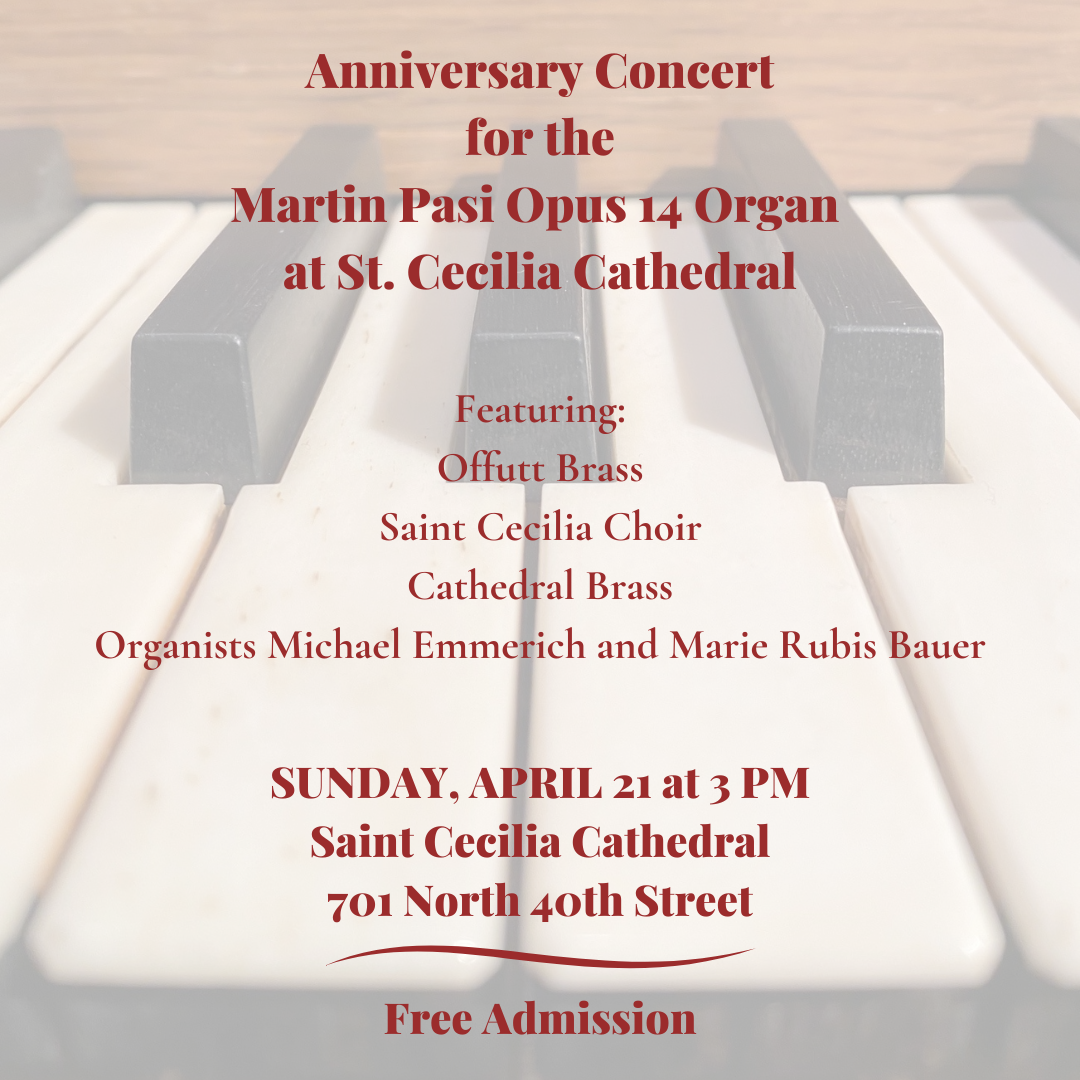
READ MORE FROM THE CATHOLIC VOICE